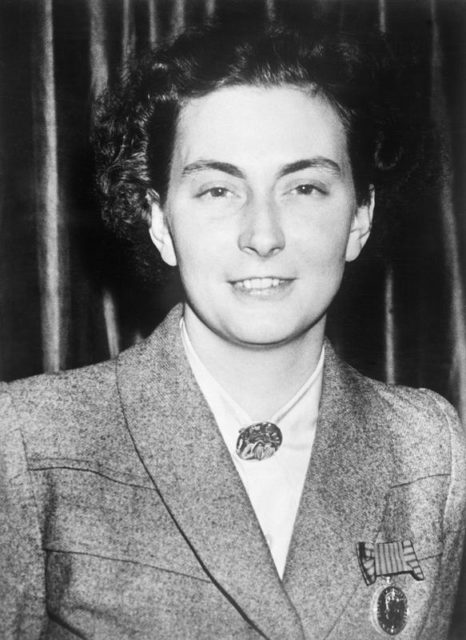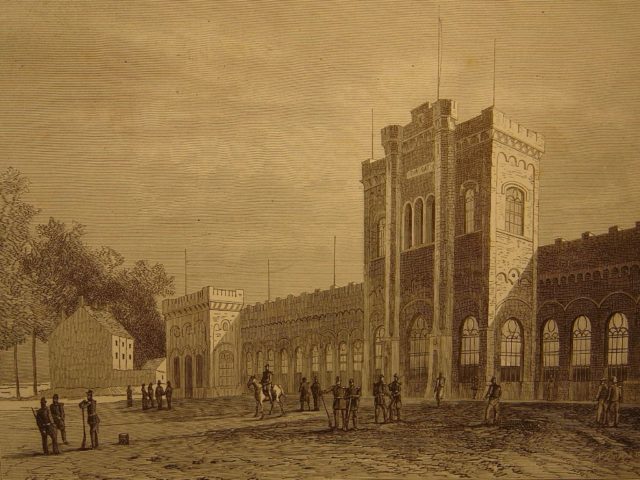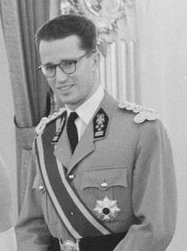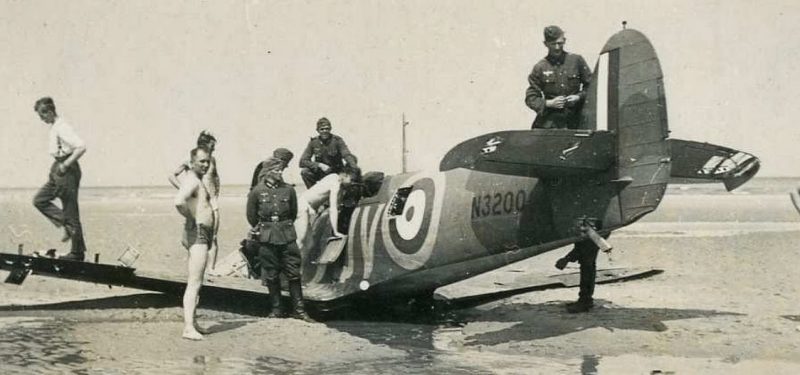In WWII a beautiful, young woman is caught red-handed. Her crime? Helping downed Allied pilots escape Nazi-occupied Europe. How does she get away with it? By confessing.
Andrée Eugénie Adrienne de Jongh was born on November 30, 1916, in Schaerbeek, Belgium. As a child, de Jongh was infatuated with another woman – Edith Cavell.
Cavell was a British Red Cross nurse who had helped some 200 Allied soldiers escape to the neutral Netherlands in WWI. For that, she was executed in 1915 at the Tir National (a military compound) in de Jongh’s town. De Jongh could not have known that her admiration of Cavell was a premonition of things to come.
After college, de Jongh worked as a commercial artist in the city of Malmédy, Liège province. She might have gone on doing that were it not for the German invasion of Belgium in May 1940. She fled.
In Brussels, working as a nurse, she met some captive British soldiers. Thinking of her childhood hero, she helped them send letters home through the Red Cross. Then Cavell did more than just assist them to send letters home.
De Jongh’s father, Frédéric, was a teacher and a headmaster and had an idea. Create an escape route to Britain.
Germany had respected Dutch neutrality during WWI. World War II was a different story, entirely. Nazi Germany occupied the Netherlands to the north, France to the South, and Luxembourg to the southeast.

Spain and Italy were allied with Germany, but the former was officially neutral. Spain was their best bet. The city of Bilbao, to be precise, as there was a British Consulate there. The 23-year-old de Jongh showed up in August 1941. She was not alone.
With her was James Cromar, a British soldier from Aberdeen, and two Belgian volunteers. The group had made it to France, boarded a train in Paris, then traveled to Bayonne. From there, they hiked over the Pyrenees and through Basque Country until they reached Bilbao.

According to Cromar, they moved incredibly fast over the mountains and through Basque territory despite doing so mostly on foot. Left unsaid was his utter amazement that a woman could be so quick, energetic, intelligent, and brave; especially as she was also attractive.
De Jongh asked the British for help because she said she could bring more over in a couple of weeks. Some were suspicious; others believed she might be a Nazi spy; while others were supportive.
In the end, the British agreed to provide funding, false documents, equipment, transportation, and whatever else she needed. But there was a catch.
They wanted control of the operation and to put it under Major Norman Crockatt (a member of British Military Intelligence Section 9 – MI9) and Lieutenant James Langley, who had lost an arm during the defense of Dunkerque the previous year. De Jongh said no.
While she welcomed British help, she wanted the Belgian resistance to have full control. The British agreed and put Airey Neave in charge of the British side. Neave had escaped from Colditz Prison, returned to England on his own, and joined the MI9.
He called de Jongh “Dédée.” She preferred to call herself “little mother” and her charges as her “little children.”
Rescuing downed Allied pilots was an expensive and tedious task which involved getting them medical care, clothes, documents, and finding them safe houses along the way.
Thus was born the Reseau Comète (Comet Line) – “comet” because of the speed by which she moved. De Jongh told everyone she offered to help they faced a long and arduous journey ahead. It was also dangerous – so much so they could expect capture or death. None refused.

“It was her eyes,” said Bob Frost, a bomber crew member whom de Jongh helped. “They were absolutely burning and there was an air of supreme confidence about her.”
She had help from another quarter – PAT. It was another escape route set up by Ian Garrow – a British soldier who missed the Dunkirk evacuations and stayed in France to set it up. Garrow was later caught in October 1941 and eventually replaced by a woman.
Near the end of 1942, de Jongh was getting worried. After a few close calls and several Comet Line members arrested, she began to suspect the French Resistance had been infiltrated. It was – by a French double agent whom the British trusted. This was when her father was taken and executed.
By the time de Jongh was caught, she had personally walked 116 Allied soldiers to safety, while another 700 escaped via the Comet Line. Of the resistance forces who operated that line, over a hundred would die for their convictions.
On January 15, 1943, de Jongh and three Royal Air Force (RAF) men were resting in the French-Basque village of Urrugne when she was arrested. She had been betrayed.
Questioned by the Gestapo, and hoping to spare the other men from torture, de Jongh admitted to being the head of the Comet Line. They laughed. A girl! In charge of an underground network that spanned from Belgium to Spain! Ridiculous!
They sent her to the Mauthausen concentration camp, and later, to Ravensbruck. With her was Francia Usandizaga, who owned the house where she was captured. Despite de Jongh’s nursing skills, Usandizaga did not survive, although others did.
De Jongh was freed at war’s end and received the George Medal (the highest civilian award Britain can give a foreigner), while the RAF gave her a clock. The Americans gave her a Medal of Freedom, while the French made her a Chevalier of the Légion d’honneur.
The Belgians too, awarded her but took it a step further. King Baudouin ennobled her by making her a Countess. She then went to Africa to nurse lepers.
